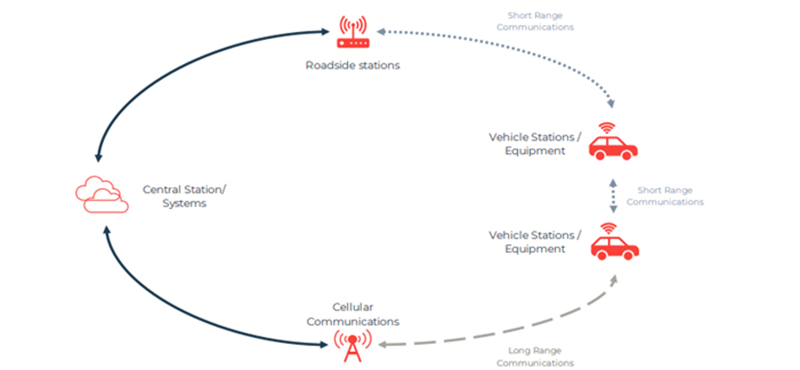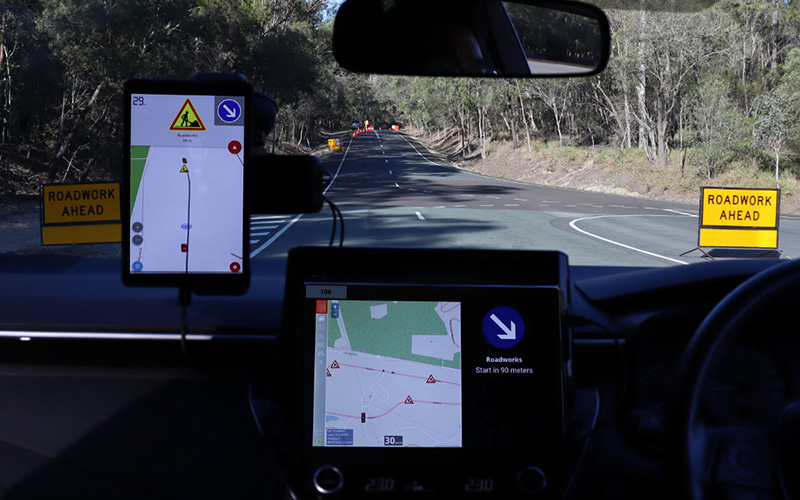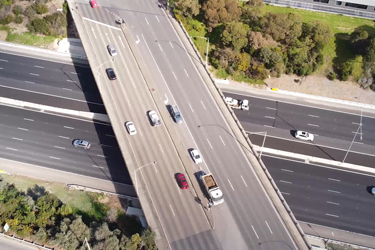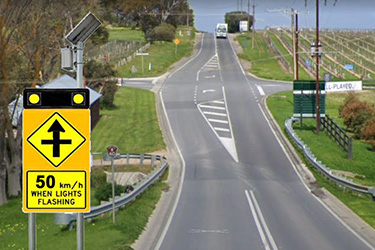C-ITS can deliver critical safety warnings to road users in real time
SAGE Automation, Published: May 24, 2023 - Updated: May 24, 2023 (11 min read)
Enabling technology that provides warning messages to drivers in real-time may soon be seen on Queensland roads, offering safety, mobility, and environmental benefits.
SAGE Automation undertook a recent unique opportunity demonstrating this type of technology - known as Cooperative Intelligent Transport Systems (C-ITS) - contributing to a proof-of-concept that can inform future implementation plans for Queensland roadways.
SAGE was selected as part of a small group of industry suppliers to participate in the Queensland Government Department of Transport and Main Roads (TMR) C-ITS proof-of-concept showcase for roadworks-specific equipment.
The proof-of-concept showcased seven common roadworks scenarios, which included:
- Two-lane two-way shuttle flow
- Two-lane two-way road with shoulder closure
- Multi-lane road with lane closure
- Low-impact on-shoulder roadwork
- Detour/road closure
- Mobile convoy, and
- Line marking.
As Queensland prepares for the deployment of C-ITS technologies across the road network, the demonstration provided further insight into how the technology can improve safety around roadworks and minimise accidents.
The Department for Transport and Main Roads has recently completed a pilot program in the City of Ipswich, which saw 355 public participants experience connected technology through retrofitted devices. Australia’s largest C-ITS pilot to date, the pilot showed how in-car safety warnings can influence positive driving behaviour.
What is C-ITS?
Cooperative Intelligent Transport Systems, or C-ITS for short, enables communication and real-time information sharing between vehicles (vehicle-to-vehicle, or V2V), and roadside infrastructure (vehicle-to-infrastructure, or V2I), as well as to wireless consumer devices used by pedestrians and cyclists.
Combining information technology and mobile communication, C-ITS enables data and command transmissions to be delivered in-vehicle to drivers, or to other vulnerable road users such as bicycle riders and pedestrians. Applications of use include stopped or slow vehicle warnings, red light warnings, emergency braking warnings and roadworks warnings.
C-ITS requires technology components to work together – gathering data from the roadside, traffic signals or flood monitoring devices for example – to deliver messages via short-range communication. The selection of technology to manage this communication to vehicles is yet to be standardised within Australia.
While C-ITS implementation is still in relative infancy on Australian roads, there are two key short-range technologies currently competing in the market - DSRC (Dedicated Short-Range Communication), known as ITS G5 in Europe, and C-V2X (Cellular Vehicle-to-Everything).
 Above: a model of both short- and long-range communications and their pathway in a C-ITS ecosystem.
Above: a model of both short- and long-range communications and their pathway in a C-ITS ecosystem.
A 2022 study, undertaken by WSP Australia for the Australian Government’s Department of Infrastructure, Transport, Regional Development, Communications and Arts (DITRDCA) in conjunction with Transport and Main Roads Queensland, Transport for NSW and Austroads, recommended a national approach to achieve the level of interoperability required.
SAGE Group recently took part in the consultation process of the Draft Principles for a National Approach to C-ITS, which will inform a framework to support C-ITS in Australia.
How C-ITS can enhance road safety
TMR’s demonstration provided an opportunity to understand how C-ITS can be used to communicate roadworks.
C-ITS has the ability to send messages in real-time directly to a driver – relevant to their location or current situation – which can help them to stay informed and react faster when needed. For situations where road conditions are changing, such as around roadworks, C-ITS can provide timely and relevant warnings that help to minimise accidents.
Damian Hewitt, Head of Smart Cities and Future Mobility at SAGE Group, highlighted the need to accurately capture what’s happening on the roads in real-time in order to deliver timely messages to road users.
“Cooperative Intelligent Transport Systems are going to be significantly important in helping to improve safety on the road, particularly when we consider the ecosystem of infrastructure, drivers, cyclists and pedestrians.
As an independent system integrator, we’re able to uplift the capabilities of all existing infrastructure and technologies in this space to ensure Australian roads are C-ITS ready. We understand the criticality of digitally connecting local infrastructure for real-time message delivery to vehicles and road users – that’s what will be essential for reducing incidents on our roads,” said Mr. Hewitt.
In the last five years, SAGE has invested in connecting C-ITS to roadside infrastructure and built a sophisticated management system to accommodate C-ITS communications. As an independent systems integrator, SAGE has been leveraging C-ITS technologies (C-V2X and DSRC) for use cases involving intersection traffic signal phase and timing awareness, as well as roadwork warning lane closure and road closure.

The SAGE Edge device can interpret signals and collect data on the roadside, connecting to critical infrastructure and decision-making points to enable the delivery of the most relevant messages in a timely manner.
SAGE’s C-ITS solution demonstrated at the showcase combines SAGE Edge, Cohda Wireless On-Board Unit (a unit within the car that communicates the message) and smart speed limit signage to provide drivers with a visual warning as well as being able to broadcast directly to relevant approaching vehicles.
The variable speed limit sign is upgraded to be road network aware, using its own built-in GPS within SAGE Edge to recognise its position on the road, determining relevant traces of traffic that are inbound towards the sign and broadcasting only to those relevant to the location.
A further trial of SAGE’s solution will be deployed in Tasmania in the coming months.
Learn more about the ways SAGE is using new and emerging technologies to benefit the future of transport and smart cities.









